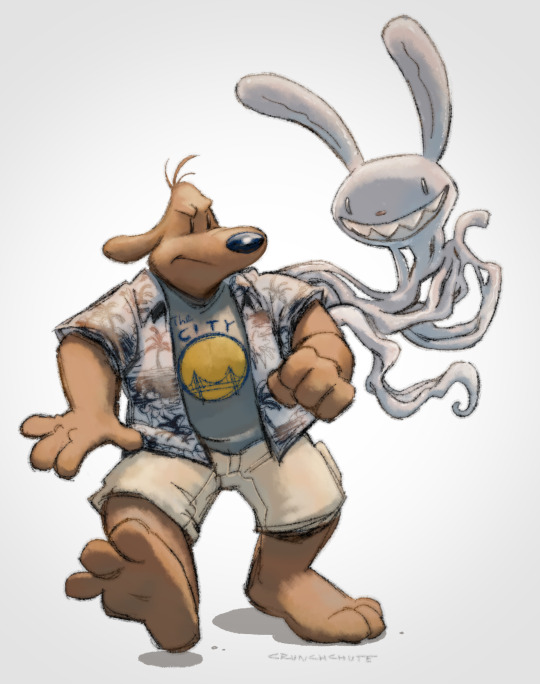(adult-she/her) | seaslug.party | I dont actively use tumblr anymore| Art blog is @seaslugparty
Last active 4 hours ago
Don't wanna be here? Send us removal request.
Text
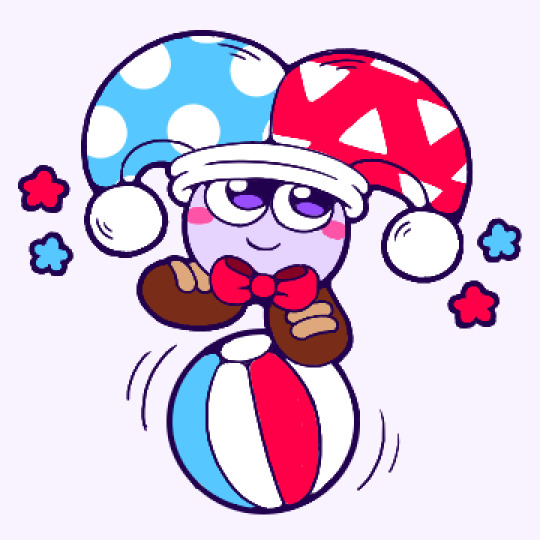
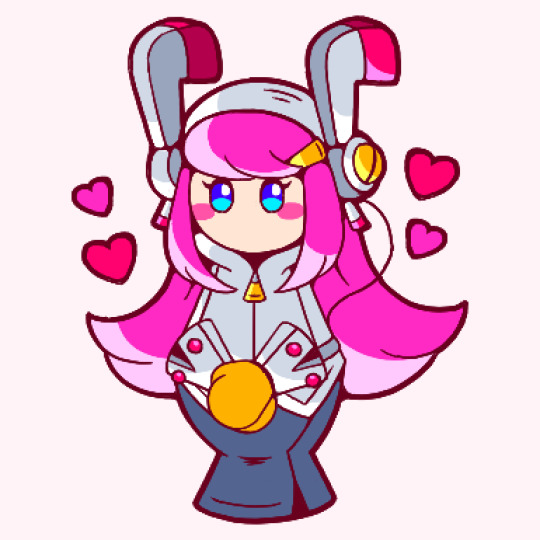
a marx and susie i drew in magma with some new friends yesterday :o)
249 notes
·
View notes
Text

had to doodle these guys once more for fun
988 notes
·
View notes
Text
A fun way imo to develop characters is to look at them and ask, "what does this imply?" This unfortunately only works if you already have a character concept in mind, but it's always been useful for me when I need to create some interiority for a character who feels a little flat.
As previously stated, literally all you're doing is looking at a character and performing a rudimentary analysis of them based on what you've already developed. A good example of this is my character Mordred, who early on in his development was conceived of as a sickly looking teenager wearing a full suit and bowtie. This is because I thought there was a lot of potential in this image. "What kind of teenager goes to school everyday wearing a full suit and bowtie?" Probably a kid who takes himself very seriously and has some interest in looking "polished" -- perhaps he even views himself above his peers for how he dresses. And, how might this visual extend to other aspects of him? Is he always someone who goes against the grain? Does he actually have an interest in men's wear, or is this a symbolic image for how he stands against his peers? I bet he has strong opinions on society. Did he buy the suit himself, or did his mom buy it, because one or the other also implies some stuff about the nature of their relationship, if his mother is supportive of his oddness or not, etc. etc. etc. A lot of stuff that you can find out, just from looking at one small aspect of a character! The same kind of process can spiral from anything - a character's actions, a character's thoughts, their beliefs, a line they say, a face they make, a hobby they have... all can be a good starting point for developing them further and figuring out more about them.
In a similar vein, I know that people recommend filling out character charts and stuff, but usually I find it more useful to think of a character in terms of a "scenario" or a "description" than in terms of their traits. "This character is smart" vs. "This characters complains to the teacher when the test has a question that isn't in the book" ; "This person is stubborn" vs. "This is the kind of person who'd rather starve than order food if they said they weren't hungry." Figuring out a character through something like this gives me a specific image of how they might act in a story as opposed to more broadly-described traits. Being as I tend to think up characters with story ideas and scenarios, it's much more helpful for me! "Ah, but how do you do this, Gert?" Easy: you stare at a wall for multiple hours until you have a revelation about a character. This is surely what everyone is capable of [nodding sagely]
2K notes
·
View notes
Text
If you ever encounter a conspiracy person of any type irl, you can act like you've never heard of
their particular conspiracy
online communities
Don't start arguing with them headfirst, or tell them that they're wrong. Make them explain the entire thing to you from the start, and once they have, ask them where has this happened? Whom has it happened to? How do they know these people that have experienced this? Like was that their uncle or a co-worker or who exactly is it that has told them about these things?
And as soon as they mention online forums, just look at them with deeply baffled confusion, and as slowly as possible, ask "so you were told all this by... someone from the internet?" with the exact same cautiously incredulous tone as if they had just said they receive all of their news from a talking dog.
53K notes
·
View notes
Text
You know what, since I'm thinking about it anyways, let's talk formalwear accessories. Most of these are traditionally menswear but a bit of gender fuckery is good for the soul, and frankly most of these are about making your mass-produced clothing fit and lay properly without having to go to the tailor.
Shirt stays: these go around your thighs to hold your shirt down, so that it stays smooth and tucked in. They're usually elastic, with 1-3 clips, and if you wear skirts frequently this is a GREAT way to make sure your top doesn't ride up. The clips will be visible if you're wearing something tight, so loose pants or skirts are where these do best. There's also an insane version that clips to your socks, but that is for lunatics. If you wanted, you could also use one of these clips to hold up thigh-highs.
These do a great job of smoothing and narrowing the waist area by keeping your shirt from bunching there.
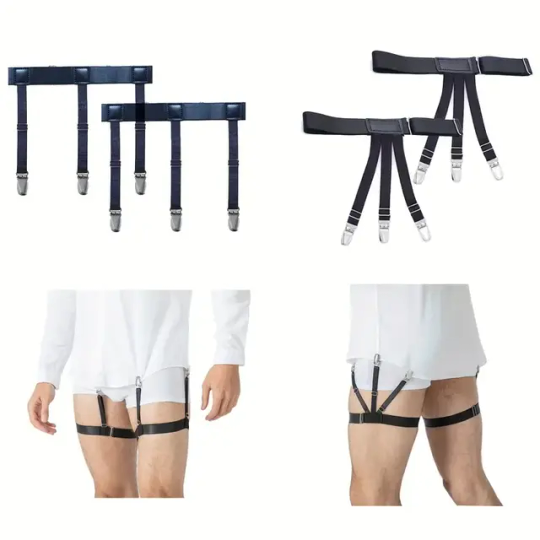
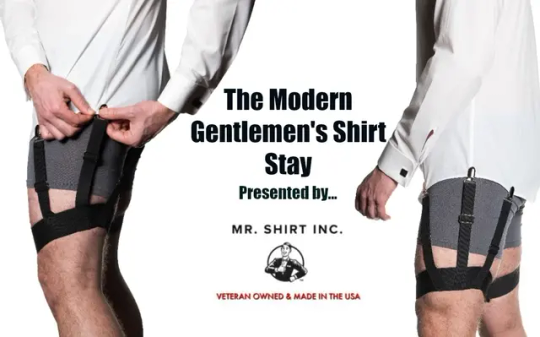
Sleeve garters: usually metal, leather, elastic, or silk. These are usually worn with button-down shirts to adjust where your cuff falls on the wrist or hand. They're properly worn on the upper arm, and you pull the fabric of the sleeve above the garter until you cuff is where you want it. Because this creates a puff of sleeve at the bicep, it also broadens the appearance of the shoulders. It's great if you're working with your hands or if your sleeves are often too long for your preference.
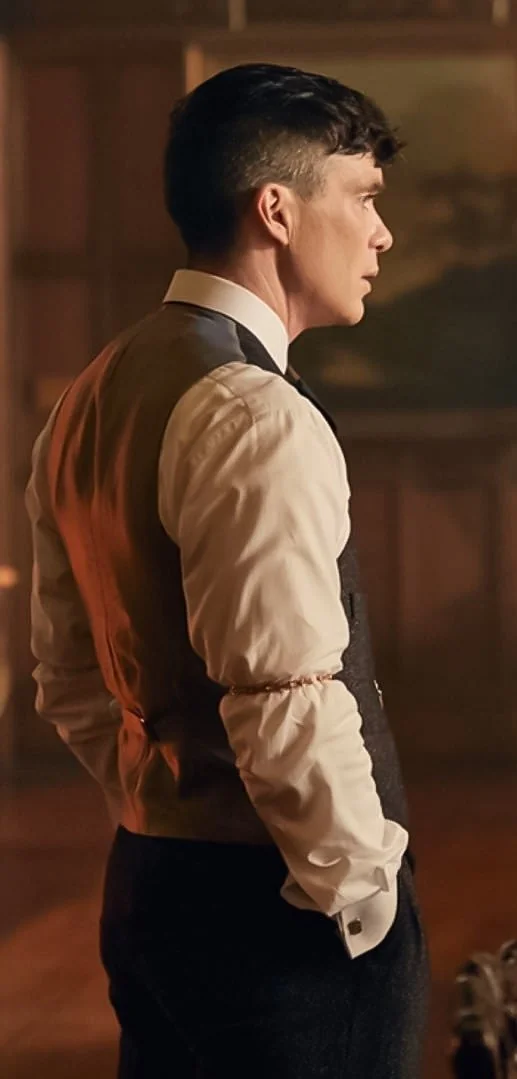
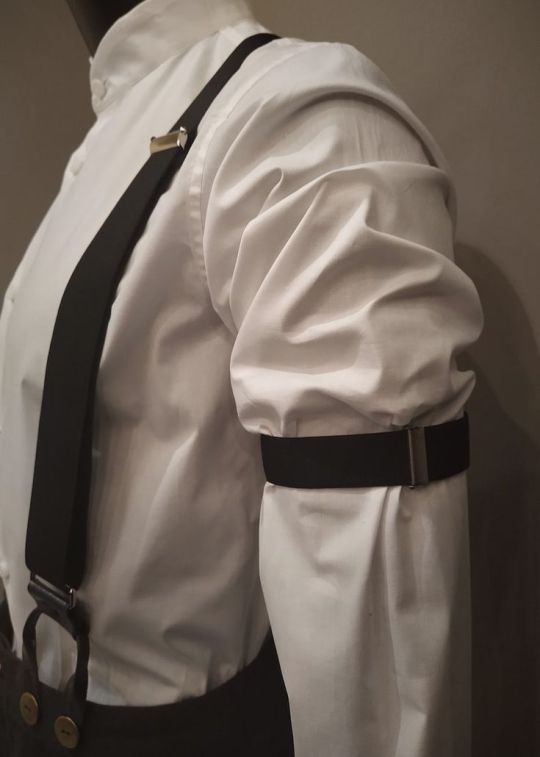
Waistband clip or belt adjustment clip/buttons
Three different ways of tightening the waistband of a pair of pants or a skirt. You're not going to get more than an inch or so tighter without weird bunching, and for most of these you'd want them to be hidden under a shirt or jacket, but they do the job if that's something you're having issues with.

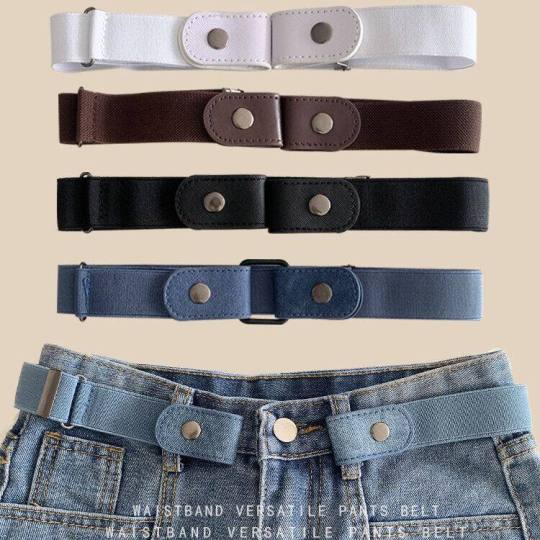

Collar pins: There are so many fun ones out there, both with and without chains. They're not terribly practical, though the slight weight may help keep your collar where you want it. Also consider collar tips, which pin (surprise) to the very tips of your collar points.
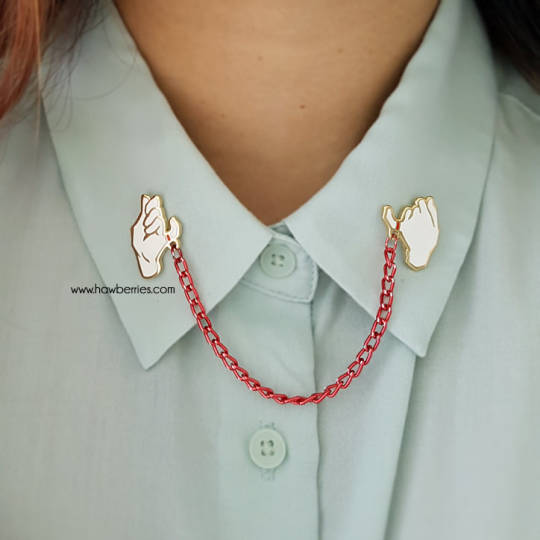
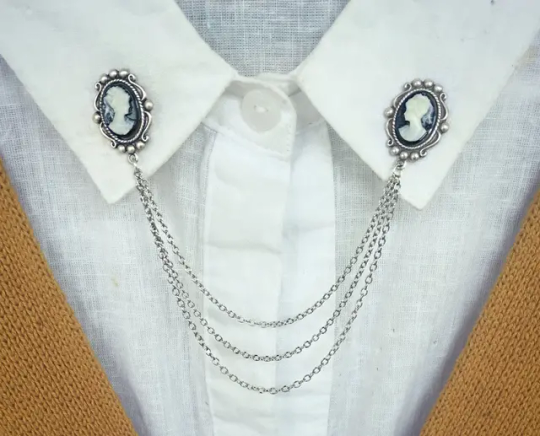
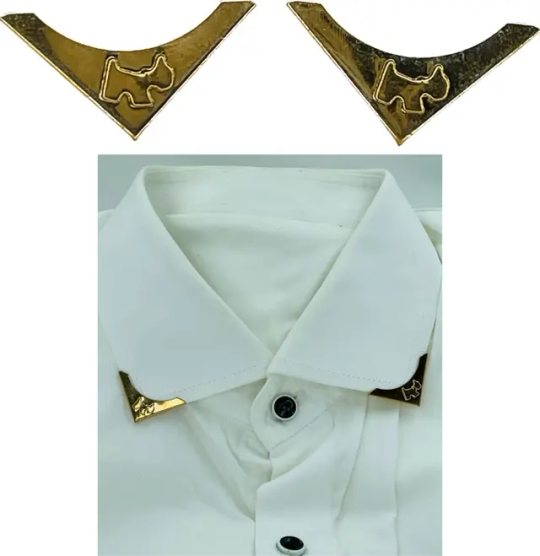
Sweater clips/guards: meant to hold your sweater or cardigan mostly closed. Great if your cardigan doesn't button, or if you don't like it to be buttoned all the way.
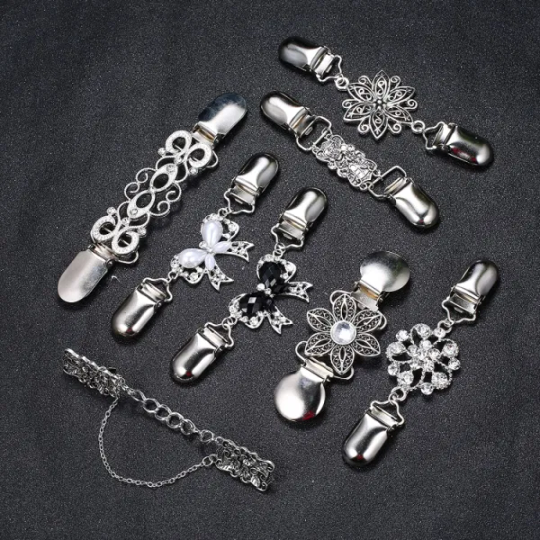
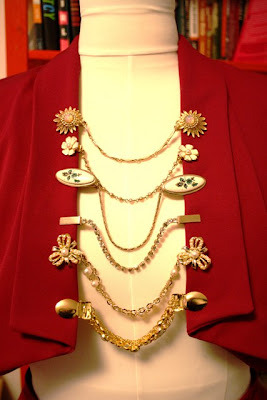
There's tons of other stuff out there like this--etsy is a great place to find this stuff. A lot of these are old solutions to the very modern problem of mass-maufactured clothes not being as one-size-fits-all as advertised, but they're also a fun way to put a bit of personality into businesswear.
43K notes
·
View notes
Text
some of the best writing advice I’ve ever received: always put the punch line at the end of the sentence.
it doesn’t have to be a “punch line” as in the end of a joke. It could be the part that punches you in the gut. The most exciting, juicy, shocking info goes at the end of the sentence. Two different examples that show the difference it makes:
doing it wrong:
She saw her brother’s dead body when she caught the smell of something rotting, thought it was coming from the fridge, and followed it into the kitchen.
doing it right:
Catching the smell of something rotten wafting from the kitchen—probably from the fridge, she thought—she followed the smell into the kitchen, and saw her brother’s dead body.
Periods are where you stop to process the sentence. Put the dead body at the start of the sentence and by the time you reach the end of the sentence, you’ve piled a whole kitchen and a weird fridge smell on top of it, and THEN you have to process the body, and it’s buried so much it barely has an impact. Put the dead body at the end, and it’s like an emotional exclamation point. Everything’s normal and then BAM, her brother’s dead.
This rule doesn’t just apply to sentences: structuring lists or paragraphs like this, by putting the important info at the end, increases their punch too. It’s why in tropes like Arson, Murder, and Jaywalking or Bread, Eggs, Milk, Squick, the odd item out comes at the end of the list.
Subverting this rule can also be used to manipulate reader’s emotional reactions or tell them how shocking they SHOULD find a piece of information in the context of a story. For example, a more conventional sentence that follows this rule:
She opened the pantry door, looking for a jar of grape jelly, but the view of the shelves was blocked by a ghost.
Oh! There’s a ghost! That’s shocking! Probably the character in our sentence doesn’t even care about the jelly anymore because the spirit of a dead person has suddenly appeared inside her pantry, and that’s obviously a much higher priority. But, subvert the rule:
She opened the pantry door, found a ghost blocking her view of the shelves, and couldn’t see past it to where the grape jelly was supposed to be.
Because the ghost is in the middle of the sentence, it’s presented like it’s a mere shelf-blocking pest, and thus less important than the REAL goal of this sentence: the grape jelly. The ghost is diminished, and now you get the impression that the character is probably not too surprised by ghosts in her pantry. Maybe it lives there. Maybe she sees a dozen ghosts a day. In any case, it’s not a big deal. Even though both sentences convey the exact same information, they set up the reader to regard the presence of ghosts very differently in this story.
48K notes
·
View notes
Text

The Markup Sticker is a humorous item from Super Mario Party Jamboree that can be used on a player to double the price that player must pay for Stars and items on the next turn, suggesting that shops all collude to gouge that specific player on that turn.
However, the internal name for that item is even more humorous, whereby it is called "inflation". This suggests that instead of the prices simply being marked up as a malicious sales tactic, that player is hit with a localized instance of economic inflation instead.
Main Blog | Twitter | Patreon | Small Findings | Source
4K notes
·
View notes
Text
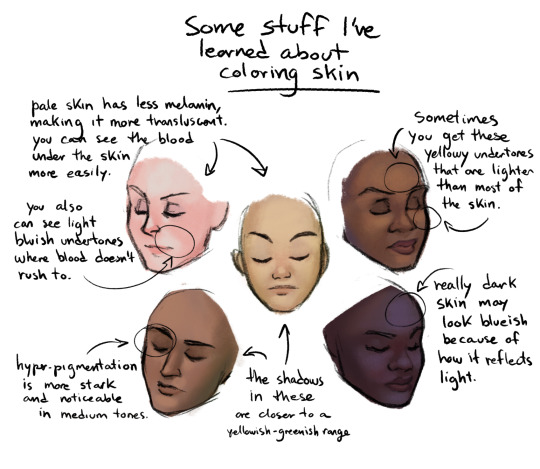

i wrote down some notes about coloring skin in case people are interested 📝
4K notes
·
View notes
Text
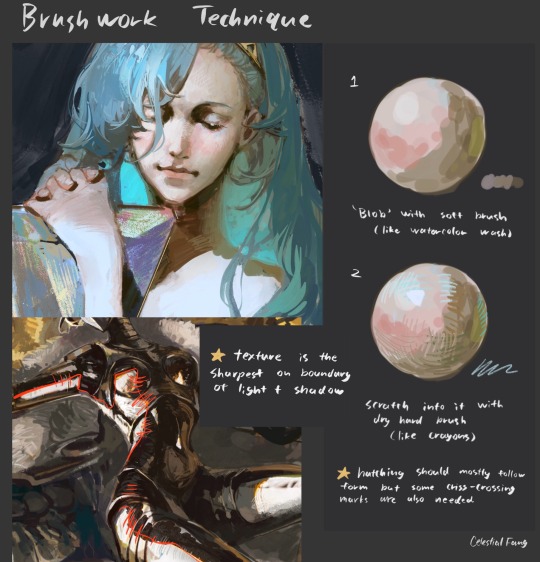
Painting method for lazy ppl like me. You only need two brushes :3
2K notes
·
View notes
Text
From the book Organizing Solutions for People with ADHD:
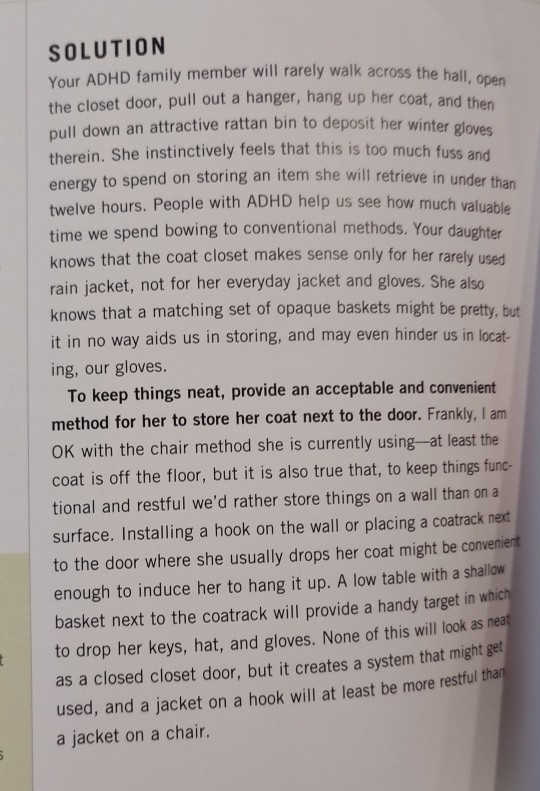
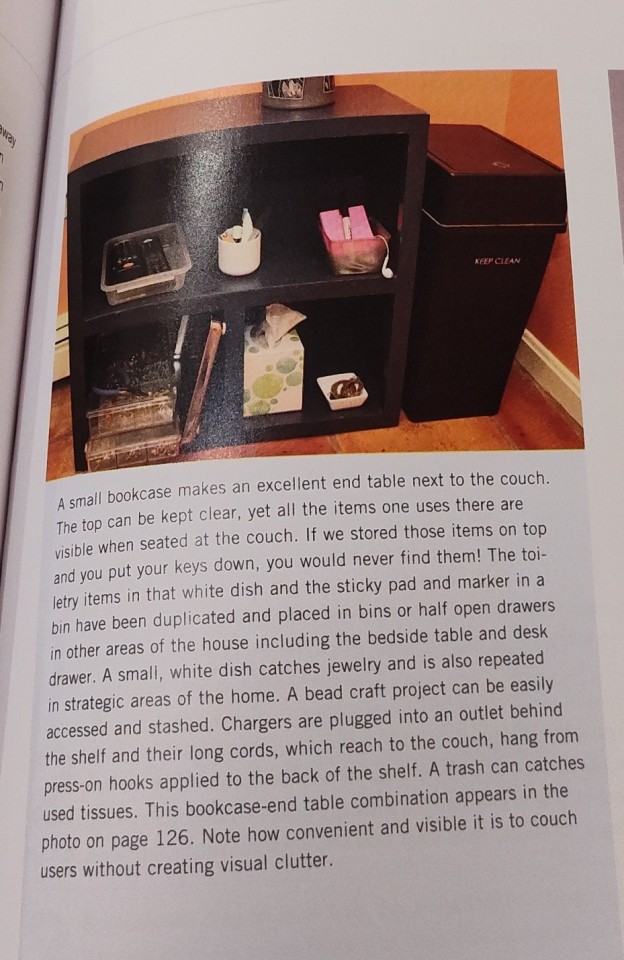
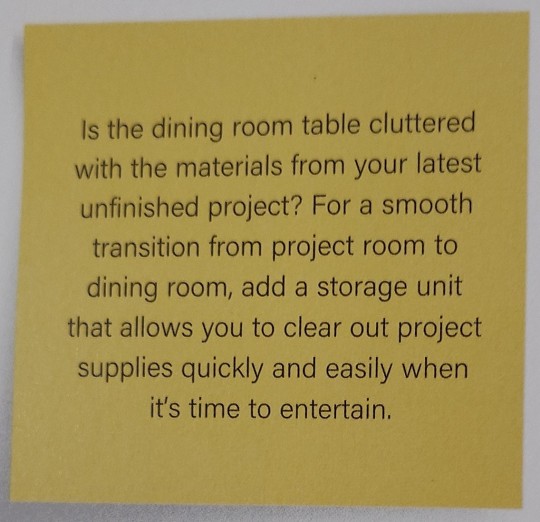
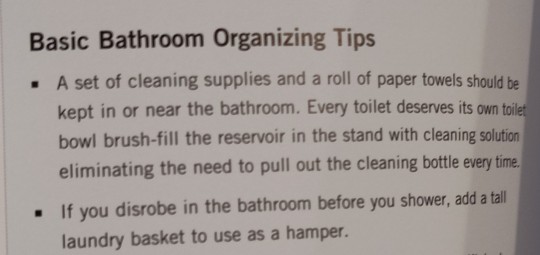
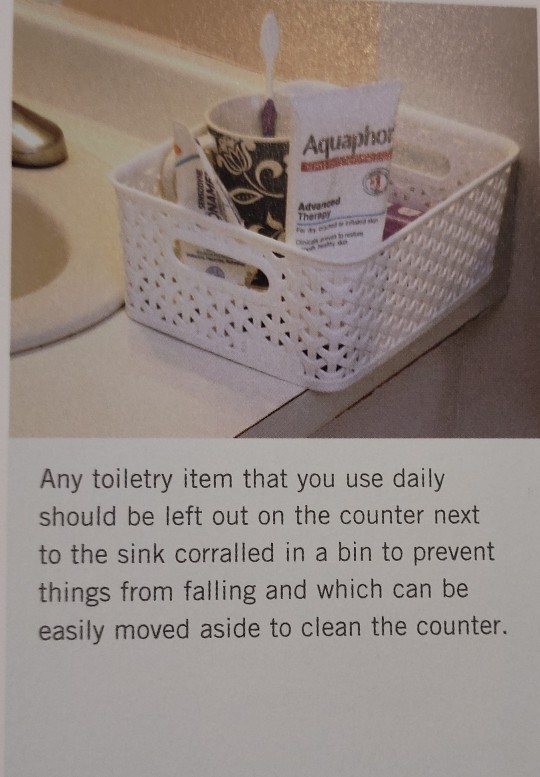
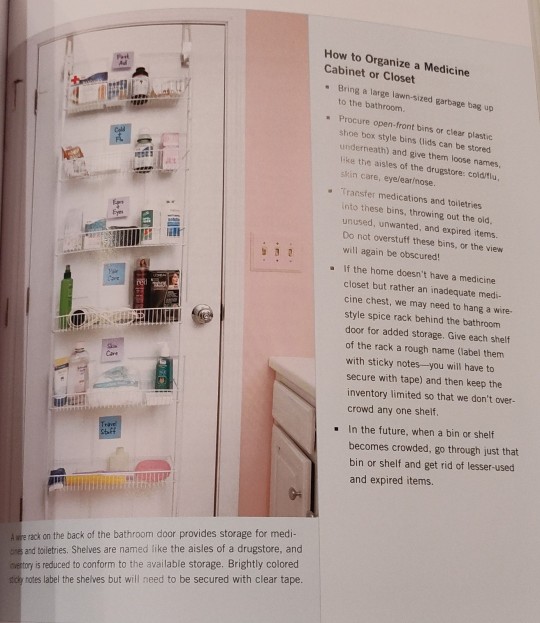
Putting a coat on the back of a chair by the door is fine, but if you prefer, use coat hooks and a large catch-all basket for dropping keys, hats, gloves.
Small bookcase end-table next to the couch to store craft projects, books, and other things being worked on for easy access.
Add a storage unit near the dining room table to transition between eating and working there.
Daily toiletry items should be stored in a basket that you can move easily
Extra toiletries and medicine cabinet items go in open shelf/basket storage so they can be seen and used easily. If items no longer fit, purge the excess. Don’t obscure the view!
If you disrobe in the bathroom, place a tall hamper in there.
Keep a set of cleaning supplies in each bathroom
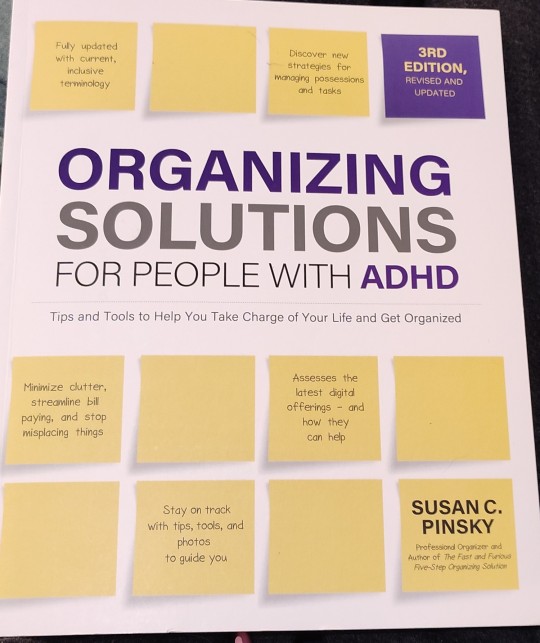
80K notes
·
View notes
Text
you: suck my dick me, an intellectual: inhale my richard
625K notes
·
View notes
Text

pov: they’re outside your front door and they want candy
989 notes
·
View notes
Text
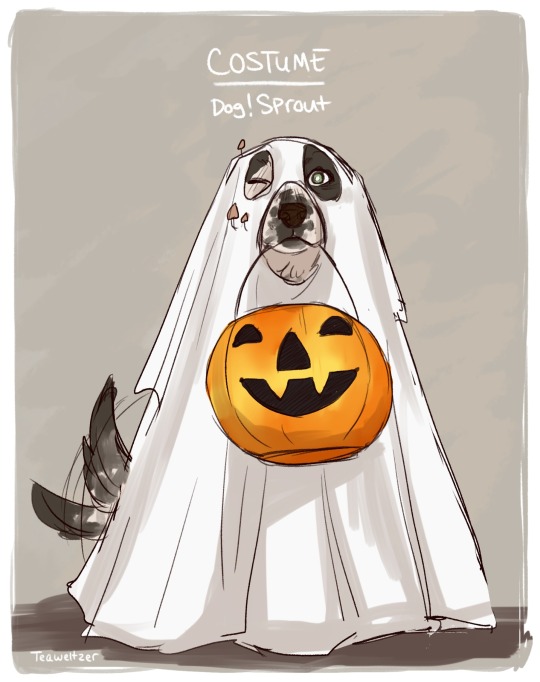
Day 31 Costume: Dog!Sprout
Happy halloween from a ghostly wild shaped Sprout!
255 notes
·
View notes
Text
highlights of trick or treaters:
kid who took an eraser, tried to bite it, and put it back
little girl who told us she loved us after getting her treats
child who, when prompted to say "thank you" instead said a confident singular "halloween!"
vampire football player
one kid who so gravely misinterpreted the candy limit that we could do nothing but laugh as, instead of four things spread out from any of the buckets, she took four things. from several buckets. all at once.
one teenager who asked us how our night has been and when asked the same, took a look at the table and said "it just got a whole lot better" while rubbing his hands
kids are so funny
32K notes
·
View notes


